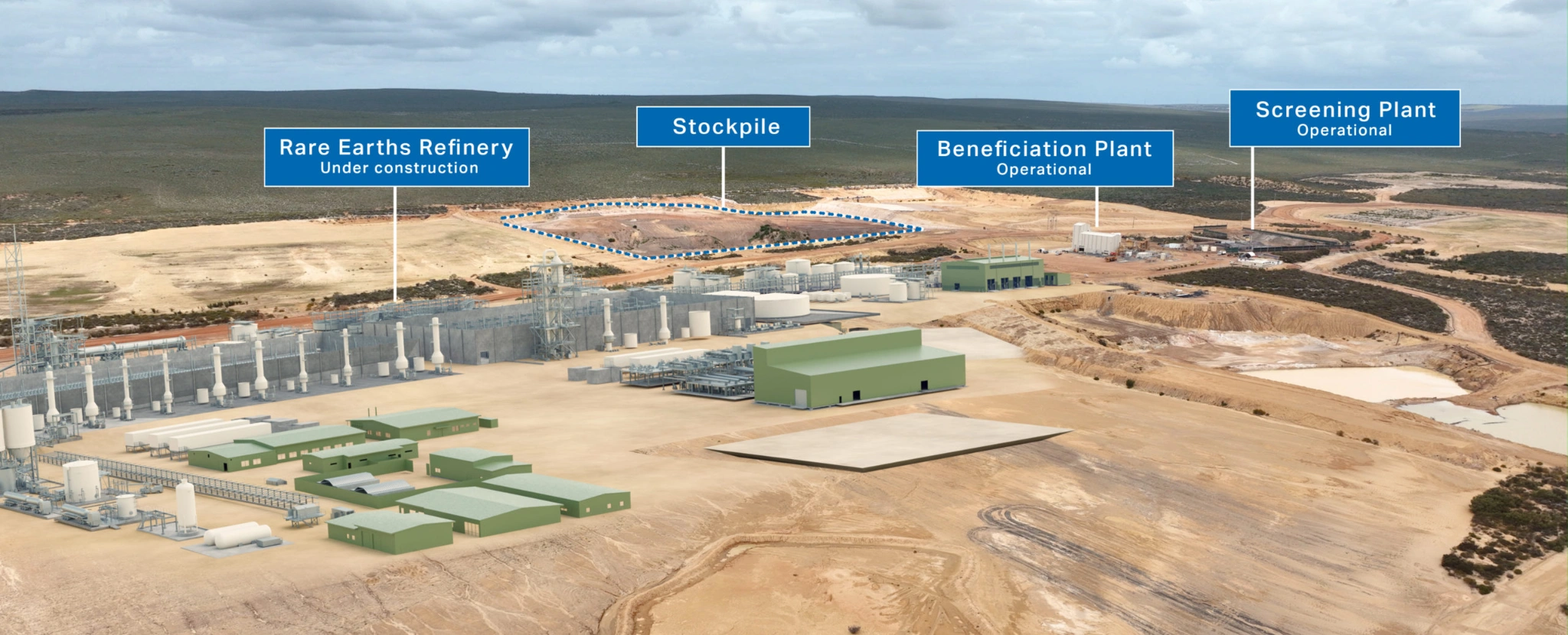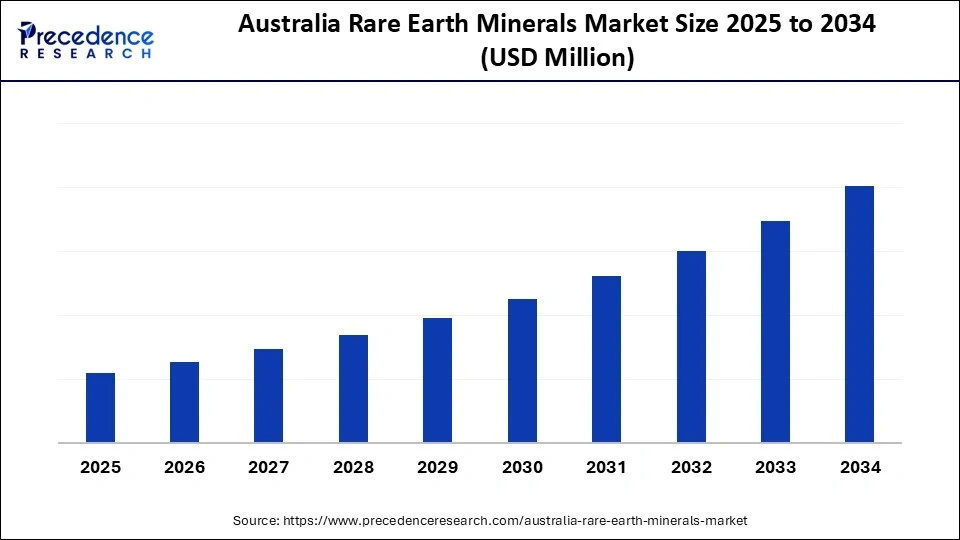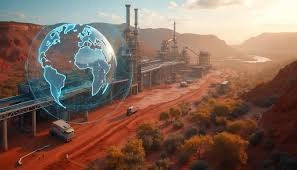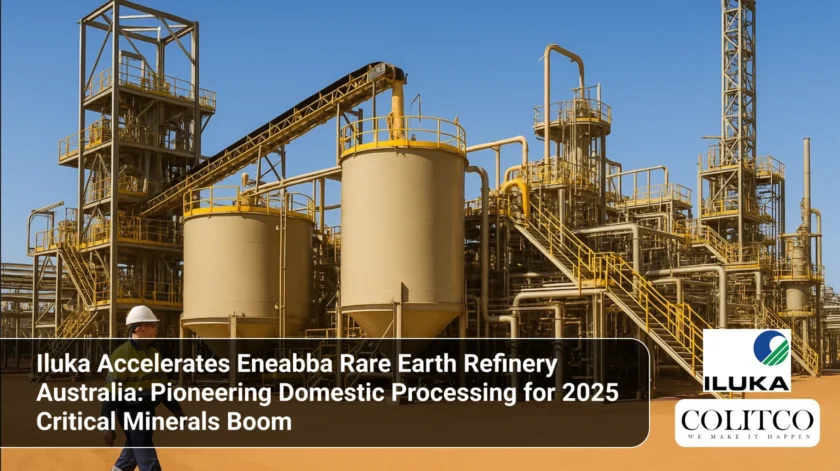Iluka Resources has hastened the development of its rare earths refinery at Eneabba, which is located in the western part of Australia. The Eneabba rare earth refinery in Australia will turn monazite and xenotime concentrates into separated rare earth oxides. When it is finished, it will be the only one of its kind in Australia. The Eneabba rare earth refinery in Australia is a significant milestone in the development of operational processing.
The refinery will output oxides, including neodymium, praseodymium, dysprosium, and terbium, which are widely used in electric vehicles and wind turbines. These materials are necessary for clean energy technologies and military systems. The Iluka Eneabba rare earths project strengthens Australia’s position in critical minerals processing.
 Iluka accelerates Eneabba rare earth refinery, Australia’s first integrated facility.
Iluka accelerates Eneabba rare earth refinery, Australia’s first integrated facility.
Why Has Iluka Accelerated Work At Eneabba?
Iluka was able to speed up the construction process due to generous support from the federal government through the Critical Minerals Facility. This allowed the Eneabba rare earth refinery in Australia to move forward quickly as the government offered a large loan to the refinery.
In its quarterly report for September 2025, Iluka reported that the site had made significant progress. Concrete foundations, piling, and structural installations are all going on and they are ahead of schedule. The company’s strategy is in line with the global push to cut back on the reliance on China for rare earths.
By pushing the Iluka Eneabba rare earths project, the company not only fortifies its position but also plays a key role in the western supply chain. Iluka’s commitment and plan are indicative of the company’s belief in the long-term demand for rare earth materials. The Australian rare earths refinery 2025 initiative supports this accelerated strategy.
How Will The Australian Rare Earths Refinery 2025 Shape Supply Chains?
The country occupies a position with a high amount of rare earths and a low ability to refine them in the world. The Australian rare earths refinery 2025 will work to improve this situation. It will process light and heavy rare earths, which will lead to the generation of more revenues from the sale of minerals than just the export of raw ones.
This transition is a step for Australia to use its resources more efficiently as it goes from mining to high-value processing. The Eneabba rare earth refinery in Australia is part of this transformation. China has long been the sole source for separated oxides; by Iluka doing it out of China, the global supply will be more resilient.
It means that Australia and its partners will not be solely dependent on one source for raw materials that are critical for production. Moreover, the project opens possibilities for new alliances with manufacturers in the downstream market, positioning the Iluka Eneabba rare earths project as a global model for sustainable mineral processing.
 Australia has abundant rare earths but limited refining; refinery 2025 improves.
Australia has abundant rare earths but limited refining; refinery 2025 improves.
Key Milestones And Challenges For Iluka’s Refinery
In April 2022, the board of Iluka gave the green light to its last investment decision for the Iluka Eneabba rare earths project. The construction is proceeding according to plan for the first production in 2027. The initial budget had to be more than doubled and is now somewhere in the range of A$1.7 billion to A$1.8 billion, whereas it used to be over A$1.2 billion.
The increase is attributed to the rising costs of inputs and machinery. The company takes execution risks that are typical for large industrial projects. That said, Iluka’s expertise in mineral sands operations forms a solid base. The Eneabba rare earth refinery in Australia will, upon its opening, process stockpiles from Iluka and also accept deliveries of feedstocks from third-party suppliers.
This will be the refinery’s method of ensuring both flexibility and long-term sustainability, aligning closely with the Australian rare earths refinery 2025 goals for advanced domestic processing.
Can The Eneabba Rare Earth Refinery in Australia Meet Global Demand?
The worldwide need for rare earth elements is still going up very high, because of the support of the renewable energy and defence sectors. The Eneabba rare earth refinery in Australia is expected to play a major role in closing the supply gap. The Iluka Eneabba rare earths project is among the rare few big-scale projects outside of China that can produce heavy rare earth oxides.
Nevertheless, there are still some challenges that need to be tackled. The quality of the feedstock, the market prices and the logistics are all going to play a part in the long-term success of the project. In addition, the company has to deal with environmental protection and regulatory compliance throughout the process of construction and commissioning.
But, there is always a risk that the sentiments of the investors will be very optimistic in such situations. Analysts say that the Eneabba rare earth refinery in Australia will help to reinforce Australia’s position in the world’s critical minerals market and strengthen the Australian rare earths refinery 2025 framework.

Global rare earth demand rises; Eneabba refinery in Australia addresses supply gap.
Australia’s Role In The Global Rare Earth Industry
Australia is changing its role and becoming a processor of strategic minerals rather than just a raw material exporter. The Eneabba rare earth refinery in Australia is a perfect example of this transformation process. It has the potential to attract more investment in downstream processing if it is successful.
The project is in line with the government’s “Made in Australia” vision for advanced manufacturing. The Iluka Eneabba rare earths project is a clear example of how government support, in combination with private sector skills, can lead to faster industrial transformation.
It also plays an important role in securing national security interests and providing skilled labour opportunities in the less populated areas of Western Australia. For the global market, it signifies a major milestone in moving toward a diverse and environmentally friendly rare earth supply. The Eneabba rare earth refinery in Australia stands as a cornerstone of this international effort.
Also Read: Balancing Supply Chains: Iluka’s Dual Approach Shapes Australia’s Rare Earths Future
FAQs
Q1: What exactly is the Iluka Eneabba rare earths project?
A1: The project is the first one integrated in Australia to separate rare earth oxides through a refinery at Eneabba, located in Western Australia.
Q2: What is the start date for production?
A2: Iluka has set its sights on the year 2027 for the start of production, which will follow the completion of the major construction milestones by 2026.
Q3: What is the source of project financing?
A3: A large loan from the Critical Minerals Facility is the main source of funding, with the Australian Government being an important supporter.
Q4: What are the benefits of the refinery for Australia?
A4: It not only fortifies the local processing industry but also opens up job opportunities and diminishes the country’s dependency on imported rare earths.












